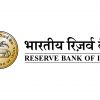
Jasjeet Singh emphasizes that analytics is no more a good to have, but a must have for banks and in its absence there could be pressure on cost, margin and growth
Jasjeet Singh, partner – Financial Services Analytics, Advisory Services, Ernst & Young pitches for banks using analytics in an optimal manner
N. Mohan: Can you broadly outline how analytics can solve the rural versus the urban cash crunch that is currently prevailing?
Jasjeet Singh: While analytics cannot help print money faster, use of optimization algorithm can help optimize distribution of the scare resource (new currency) optimally across cash dispensing locations (ATMs, tellers in branches) across all banks such that it reaches the maximum population of India.
Here’s the detailed approach: Currently mandate for ATM refilling (which ATMs, what amount) is with each of the banks. This has resulted in a scenario where certain zip-codes have cash out across all ATMs (especially in tier-2/3 cities), while certain others have multiple bank ATMs within walking distance of each other having cash. As a short-term measure (till the cash crunch is resolved), RBI can take an “across-bank” view by using geo-spatial visualization to identify regions where ‘across banks’ ATMs have a cash-out situation. Population density data can be overlaid on this to further help RBI provide directions for cash routing to certain cash starved locations to help optimize cash distribution such that the pain for a larger segment of the population is alleviated. This can be further augmented to not just optimize cash routing to ATMs, but to any cash dispensing location ie, bank branches as well to be covered under similar geo-analytics.
What are the perceived benefits of analytics in the short and long run?
Analytics is no more a good to have, but a must have for banks. If you do not leverage analytics for your decision-making, you are likely to be under increasing pressure on cost, margin and growth. Let us understand this better through an example of how banks with low analytics sophistication can fall into an adverse selection trap. Compare two hypothetical banks to reinstate the importance of analytics in an increasingly competitive world. Bank A has only basic BI/reporting in place, while bank B has established an advanced analytics center of excellence and is using analytics-based decision making techniques. Given the limited view of a customer’s unique position and preferences, Bank A will offer flat-rate pricing for all of its customers irrespective of their credit-worthiness. Bank B, on the other hand, will leverage risk-based pricing models to offer better rates to their ‘good’ or ‘credit-worthy’ customers, and less attractive rates to the rest of the product applicants. As a result, Bank B would attract more credit-worthy customers, while Bank A will only appeal to ‘riskier’ customers who did not get preferential rates from Bank B. This biased selection will result in increased NPAs, resulting in pressure on Bank A’s profitability and long term business model viability.
Secondly, banks manage a considerable amount of data on their customers. They use analytics for fraud detection, simple credit risk calculations and marketing. However, a lot remains to be done to turn their data into actionable insights. In particular, as customer interactions become more electronic and distant, banks need new insights into customer behavior. By upgrading traditional techniques and using new credit risk scoring models, analytics can help predict behavior to the extent of identifying an individual’s propensity to buy a particular product, default on a loan, or increase his/her wealth. By building personal preferences information into self-service processes, banks can also restore the sense of personal relationship that human tellers once provided.
What are the pros and cons of traditional tools vs use of analytics?
Advancements in analytics tools have today resulted in reducing the cost of setting up an analytics capability. It is no longer a huge capex model!
Newer tools tend to be more GUI based thus taking the power analytics from the data scientists to business users.
Power of new tools to process more data faster and the ability to process both structured and unstructured data has opened up many more possibilities to enhance existing risk and marketing models for banks.
How do you think analytics tools can be a differentiator for banks in taking care of their customers?
As customer interactions become more electronic and distant, banks need new insights into customer behavior. By deploying advanced analytics techniques, banks can predict with reasonable accuracy customer needs for a banking product/service at any point in time. This will help them build customer preference related insight into self-service processes and restore the sense of personal relationship that human tellers once provided.
From a banks’ perspective, this increased customer understanding will help them not only have a more satisfied customer, but also increase revenue via improved customer cross-sell, enhance acquisition effectiveness and increase wealth management penetration in high net worth customers.
Click here for online subscription to read all the articles in full







